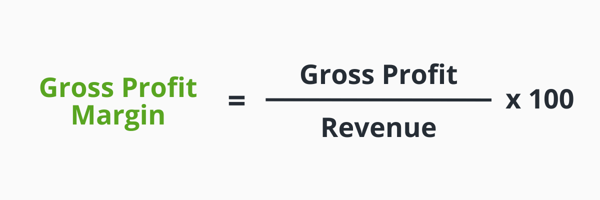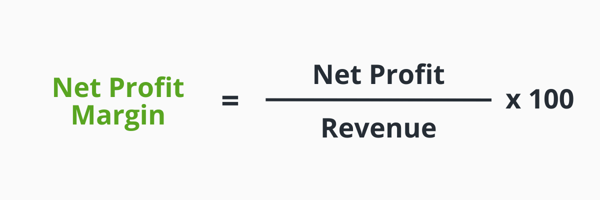The Best Seller, Slow Seller Analysis: How to Optimize Your Menu
Using the best seller, slow seller analysis, you evaluate food and beverages according to their profitability and can then make informed pricing...
Discover how to increase profits in the foodservice industry and calculate the profit margin for your restaurant, ensuring financial success.

Anyone who runs a foodservice business knows how crucial the ongoing monitoring and optimization of key metrics are for success. In particular, the profit margin plays a significant role in this.
This KPI provides information on how efficiently a business operates and how well it can control costs. It is important for restaurateurs to monitor the profit margin and develop strategies to improve this metric in order to ensure the profitability of the business.
In this post you'll learn:
The profit margin of restaurants represents the ratio between the profit and the total revenue of a business. This is typically expressed as a percentage.
The profit margin should not be confused with the profit itself. The profit indicates the actual amount of money that remains as surplus from a business's revenue at the end of a specific period.
A high profit margin in restaurants suggests that a business has a healthy financial status, creating room for growth and enabling long-term success.

To calculate the profit margin for your restaurant, subtract all costs, such as beverage and food costs, personnel expenses, rent, etc., from your total revenue. Then, divide the profit by your total revenue.
It's important to regularly monitor and carefully analyze the profit margin to keep track of the financial performance of your business and make informed decisions to increase profits. A low profit margin suggests that you may not be selling your food and beverages profitably, which could lead to losses.
Depending on whether you want to determine your profit margin in gross or net terms, there are two different methods of calculation:
The gross profit margin in the foodservice sector indicates the difference between the sales price of a dish and the costs of the ingredients used to prepare it.
To calculate this, you must first determine your gross profit by subtracting all production and sales costs for a specific period from your revenue. Then enter the value in the following formula:
Gross Profit Margin = (Gross Profit / Revenue) x 100

The net profit margin represents the amount that remains after deducting total costs. It indicates how successful and profitable your business is.
To calculate net profit, you need to subtract all business expenses (cost of ingredients, salaries, rent, etc.) from the revenue. Then, to calculate the net profit margin, you use the following formula:
Net Profit Margin = (Net Profit / Revenue) x 100

As with every KPI in the restaurant industry, there is also no universal answer as to how high the average profit margin should be for restaurants. After all, this is influenced by a variety of different factors, such as the average cost per guest or the type of restaurant.
For example, the revenues and expenses between a fine-dining restaurant and a fast food restaurant differ significantly. Consequently, the profit margins also vary. For this reason, restaurant owners should research the profit margin specific to their niche to ensure long-term success.
Here is an overview of some different types of restaurants with their respective average profit margins in percentage:
On average, the profit margin for these businesses ranges between 3% and 5%. The reason for the low margin is the high overhead and labor costs.
In comparison to full-service restaurants, these establishments require fewer employees as they mostly offer self-service. As a result, the average profit margin is somewhat higher, ranging between 6% and 9%.
Here, too, the average profit margin is between 6% and 9%. These businesses benefit from lower overhead costs such as rent, insurance, and utilities.
Similar to food trucks, catering businesses also benefit from lower overhead costs. The average profit margin for catering services is between 7% and 8%.
If your profit margin is too low, there are two ways to improve it. You can pursue approaches to increase sales volume or decrease overhead expenses. Here are five strategies you can choose for your restaurant to increase profitability:
When was the last time you updated the sales prices of your dishes? Do you know which food and drinks are selling well and how much profit they are making (best sellers and slow sellers)? Regularly review and optimize your prices on your restaurant menu to ensure that they cover the cost of the ingredients and make a reasonable profit at the same time.
Pricing goes hand in hand with menu adjustments. Once you have determined your new menu prices, you can highlight the dishes on the menu that bring in a good profit.
What is also essential for top-notch service in restaurants is the ability to promote additional sales. Strategies such as cross-selling and upselling can help you generate more revenue.
For this to be successful, it is advisable to adequately train your service staff by going through potential sales scenarios together. Your employees should also be well-versed in your menu to provide each guest with personalized and fitting recommendations.

Another way to increase your revenue is through marketing initiatives. Whether through social media, promotions, or newsletters: leverage various channels and marketing strategies tailored to your concept and target audience to attract more customers and boost demand.
Reducing food waste is crucial for increasing a restaurant's profit margin. By accurately storing food and carefully planning purchases, you can avoid overstock and reduce your food costs.
Use a restaurant management software to streamline these processes and maintain an overview of inventory costs, pricing, food costs, and more.
What you should also consider when aiming to improve your profit margin by reducing wasted food is demonstrated by this study: For every dollar restaurants invest in reducing food waste, they can save 7 dollars.
Effective employee scheduling involves finding the right balance between staffing needs and costs, contributing to improved profitability and, consequently, profit margin.
To align working hours with demand, it is particularly helpful to review your past planning: How many customers were there on a specific day? How many employees were scheduled? Was there too little or too much staff on site? Often, patterns can be discerned from experiences alone, providing valuable support for future employee scheduling.
In the foodservice industry, the profit margin plays a central role in business success. It allows restaurateurs to assess the efficiency of their establishments and control costs effectively. A high profit margin signals financial health, creating room for growth and long-term success.
The average ideal profit margin varies depending on various factors, such as the type of restaurant you operate. However, don't fixate too much on a specific value. Instead, regularly review and adjust your profit margin to ensure the financial stability of your business.
Using the best seller, slow seller analysis, you evaluate food and beverages according to their profitability and can then make informed pricing...
How can you optimize the ordering process in your restaurant? Take a look at our 4 tips for your purchasing and find out how to keep an overview.
We'll show you what you need to know about selecting your foodservice suppliers and how digital solutions can help your procurement.
Make sure you never miss out on updates and trends about digitalization in the hospitality industry by subscribing to our monthly newsletter. You will receive useful information delivered directly to your inbox.